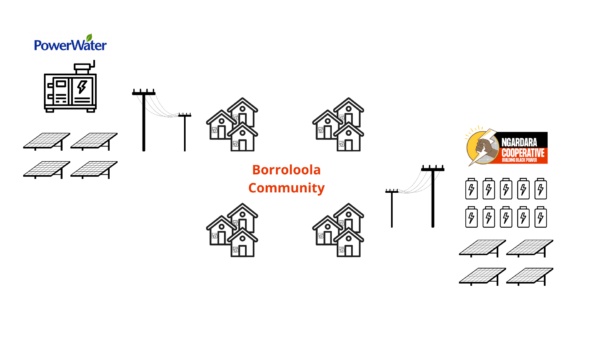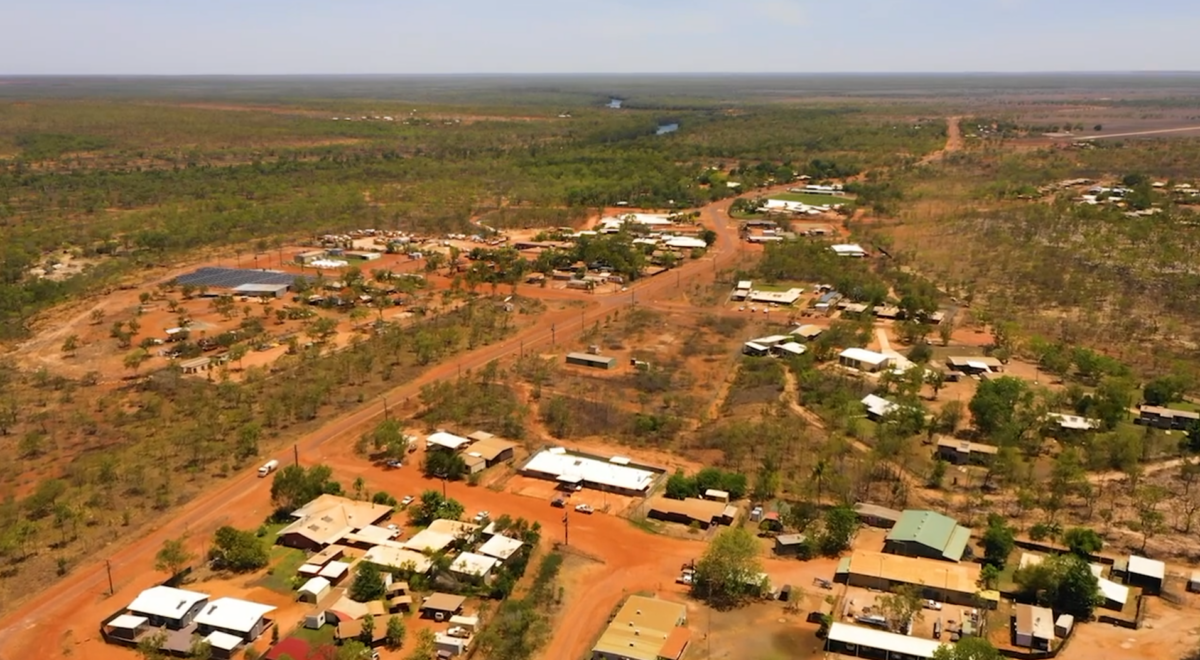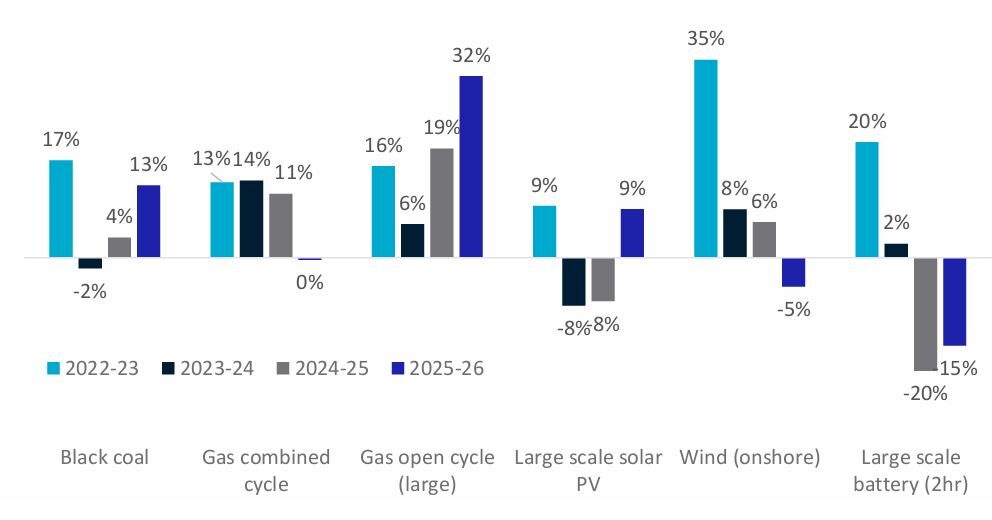The remote Northern Territory (NT) community of Borroloola in the state’s Gulf Country, 972 kilometres southeast of Darwin, is increasing its current solar, and adding battery storage capacity through an initiative called the Ngardara Project.
Receiving 88% of its electricity generated with diesel via the NT government’s Power and Water Corporation (PWC), where 15% is supplied by a small solar system, the microgrid will improve the system’s capacity to export at greater levels and boost reliability and affordability for Borroloola’s residents.

Image: Ngardara Cooperative
The Ngardara Project will increase current solar and battery storage capacity with a 2.1 MWdc solar and 3.2 MW / 6.2 MWh battery energy storage system (BESS) using a new control system that integrates with the existing PWC generation plant.
It’s estimated the upgrade will allow the Borroloola electricity system to operate at around 70-80% renewables and up to 100% in some parts of the day, removing the need for 1.2 million litres of diesel every year.
As a recipient of a Foundation for Rural Regional Renewal (FRRR) grant, the Ngardara Project joins 50 similar community driven renewable energy projects, to ensure equity in the energy transition, realise cost savings and boost community resilience through employment, skill building, and ownership.
FRRR Climate Solutions Lead Sarah Matthee said a grant for the project was given to community-focused NT Aboriginal organisation Original Power, which in turn works with the Ngardara Cooperative, a First Nations community-controlled organisation representing the Borroloola community.
The funds are being used to boost the governance and capacity development of community members to enable them to lead the development and operation of the utility-scale solar microgrid.
“Reflecting on all the energy projects supported through FRRR’s grants programs, it’s impressive to recognise that we’ve directly supported over 50 community groups to install solar and/or battery energy solutions, totalling almost $1.2 million (USD 700,000), in the last six years. That’s a lot of clean energy!” Matthee said.
“While much funding is focused solely on discrete solar and/or battery installations, we also deliver grants to many who are investigating or establishing larger clean energy projects, like the Ngardara Project, and require support across their project lifecycle, or where the support that is needed is not so much the installation, but instead in scaffolding or acting as a backbone to convene conversations and networks.”
This content is protected by copyright and may not be reused. If you want to cooperate with us and would like to reuse some of our content, please contact: editors@pv-magazine.com.









By submitting this form you agree to pv magazine using your data for the purposes of publishing your comment.
Your personal data will only be disclosed or otherwise transmitted to third parties for the purposes of spam filtering or if this is necessary for technical maintenance of the website. Any other transfer to third parties will not take place unless this is justified on the basis of applicable data protection regulations or if pv magazine is legally obliged to do so.
You may revoke this consent at any time with effect for the future, in which case your personal data will be deleted immediately. Otherwise, your data will be deleted if pv magazine has processed your request or the purpose of data storage is fulfilled.
Further information on data privacy can be found in our Data Protection Policy.